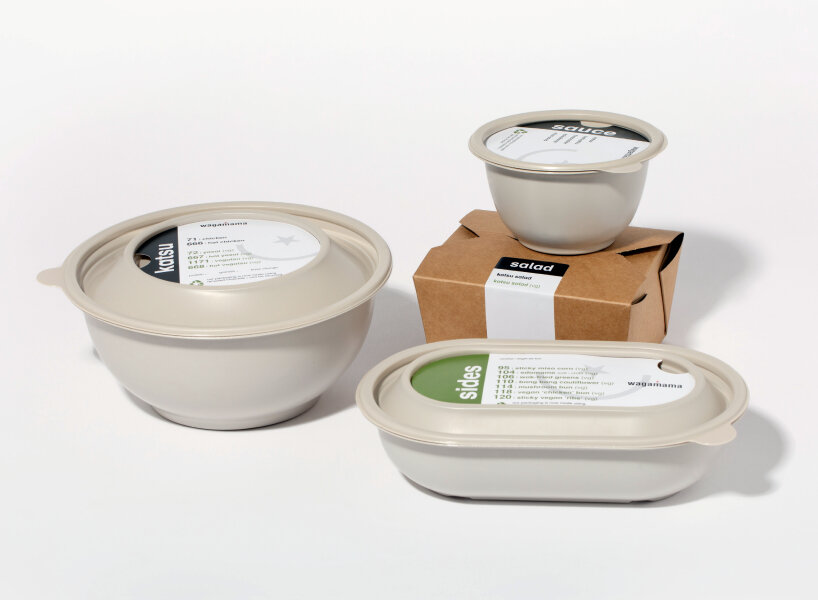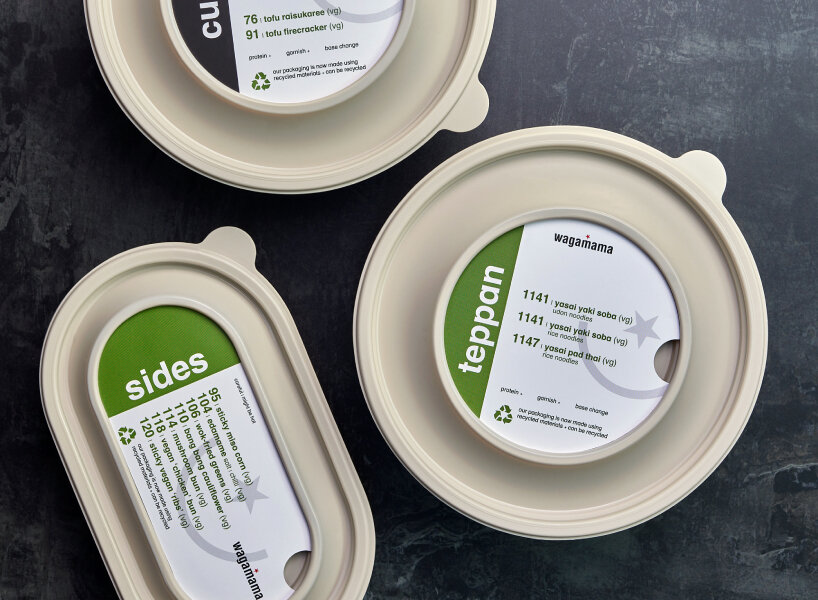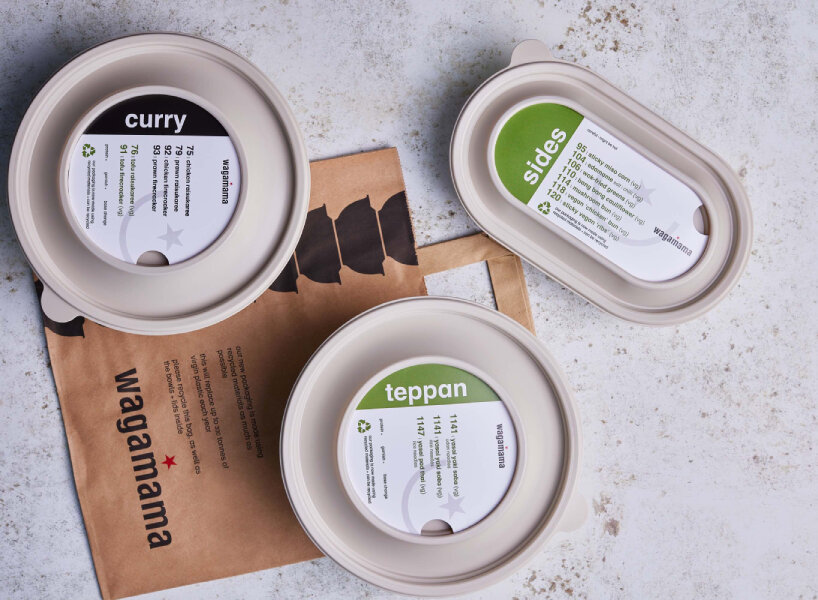nude-colored wagamama bowls are downsized to reduce air space and retain food warmth
Wagamama bowls for hotter food
Design agency Morrama has revamped restaurant chain Wagamama’s bowls by reducing its size to 20 percent, making tighter air space and helping the food stay hotter for a longer period. The design team – composed of Jo Barnard, Harry Mason. Ben Polhill, Léa Berger, and Andy Trewin Hutt – spent months on research and testing to redesign the containers of the restaurant, targeting the plans of the chain to materialize reduce, recycle, and improve approach to its packaging design. The design agency found a way to adopt recycled PET as the primary material of the containers, which they say is safe to use in food products the same way polypropylene plastics are not. The team states that the switch would cut up to 330 million tonnes of virgin plastic from Wagamama’s takeaway.

images courtesy of Morrama
Crystallized polyethylene terephthalate
The Morrama team works on using a crystallized version of PET to bring additional heat resistance to their Wagamama bowls, made from 70% recycled PET. They say that the remaining 30% virgin plastic is required for structural integrity. ‘Despite exploring bio-based and biodegradable materials, it was clear that plastic was going to be required. At least for some dishes,’ the Morrama team states. The Morrama team also share that they draw their design from circular-design strategies and by conversing with materials, recycling, and packaging experts to define the Wagamama packaging redesign.

close-up view of the containers
Cutting the amount of plastic
‘The goal seemed straightforward – cut the amount of plastic in the takeout packaging,’ the team shares, whose step to downsize the bowls by 20 percent ‘cut a fair amount of plastic out straight away,’ as they put it. Since Wagamama bowls have a distinctive form, the design team tries to retain this while incorporating the new elements. ‘A more natural mushroom tone reflects the planet’s conscious step forwards and this lighter color increases the desirability of the material at recycling,’ the team states.

the natural mushroom tone is applied to all containers
